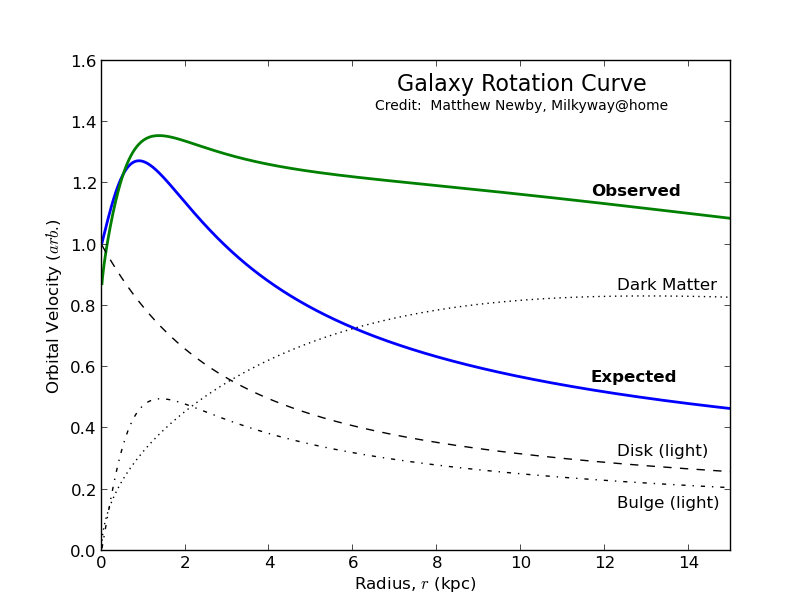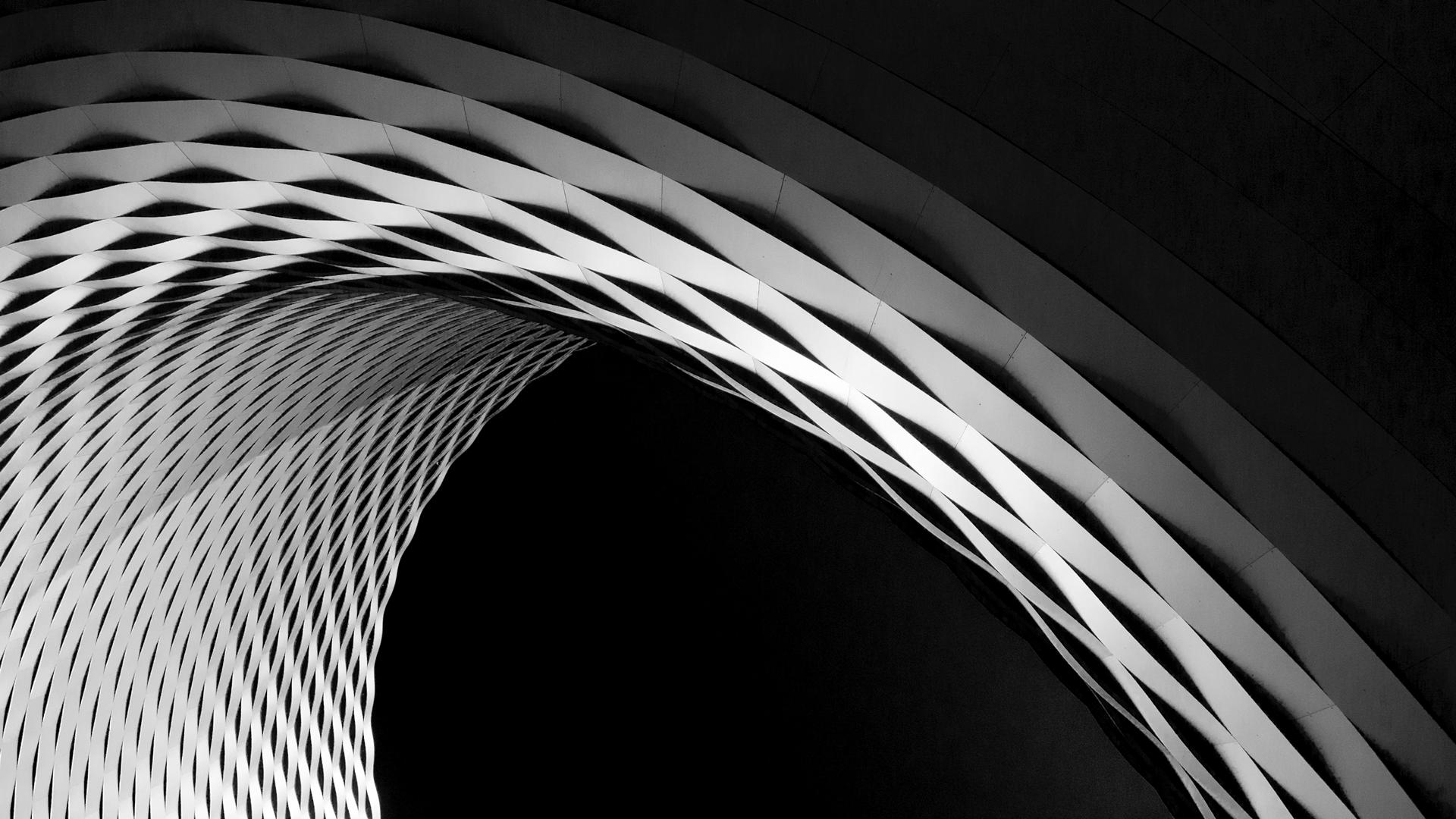Galaxy Rotation Curve

This figure illustrates the “rotation curve problem” that was discovered by astronomer Vera Rubin. The rotation curves of every large galaxy are too flat to be created by the luminous matter (stars, gas, and dust) in those galaxies, and so missing matter – Dark Matter – must make up the missing mass.
This is a very popular figure that I put together in a day by building a fairly accurate gravitational model of the Milky Way galaxy, then used the model to derive rotation curves.
This figure was originally created for the MilkyWay@home science page, but other versions have appeared in the Chinese “Amateur Astronomer” magazine, and OpenStax’s University Physics (As Figure 13.32 in Chapter 13.7). The original figure has been re-used multiple times, and is usually found in the top five results for image searches for “Galaxy Rotation Curve” (and is often #1).
One issue with this figure is that it does not include the effects of gas. Gas would add a rotation curve that looks like a much smaller version of the dark matter curve. This wouldn’t effect the major point of the figure, but maybe I’ll add it in someday.
